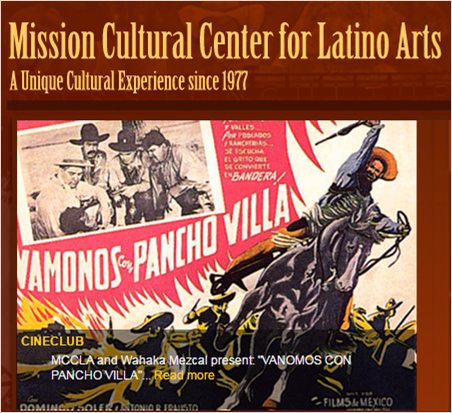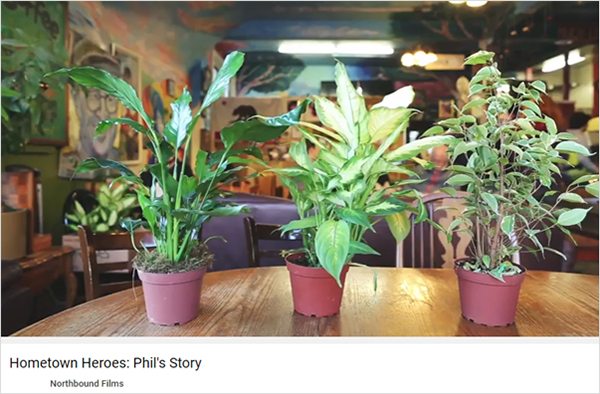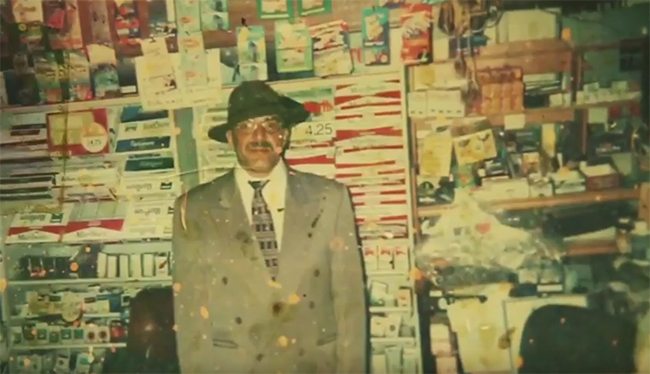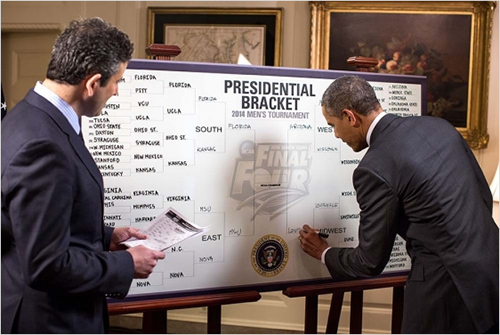On a charitable day, I would characterize most company videos as dreadful.
Consider what happens when you go to an event, meet a new person and that person launches into a soliloquy of “me, me and in case you missed it, here’s more about me.” Right. You walk away. Why would a company video be any different?
Of course, the moniker “company video” by definition means the video spotlights the company. It’s just that shaping a company video that tells an actual story from the outside looking in — as opposed to the typical inside looking out — has a fighting chance to grab the audience’s attention for 180 seconds or so.
This video on Philz Coffee created by Northbound Films does exactly that.
It feels real.
Humor and fun language lift the storytelling.
The narrative even shares a slice of Philz’s past that some would perceive as negative,
“He sells the country’s cheapest milk, beer and cigarettes.”
For a look behind the camera, I spoke with Jordan Ching, co-founder of Northbound and the director of the Philz video. It turns out that Jordan is a self-taught film maker, having studied business in college before landing in cube land as a procurement specialist. How one goes from procurement and filled spreadsheets — I’m sure there’s a less creative function; I just can’t think of one at the moment — to the blank canvas of video-making is a story for another time.
LH: So many corporate videos fall flat because they emphasize chest-beating. How did you move Philz away from this pitfall?
JC: We got extremely lucky with Philz because they let us have total creative freedom. We approached them with a concept in mind and they were open enough to run with it.
LH: Did you establish a certain vibe you wanted from the video before the shooting commenced?
JC: Yes, we wanted to bring a quirky and fun feel to the Philz story. We saw there was a lot of video on Philz out there, but nothing that really captured what Philz is about.
LH: I love the opening of the video with San Francisco circa 1970s. Even though it’s only a few seconds, it establishes a bigger narrative than just a coffee company. How did this come about?
JC: We were inspired by another piece that did something similar. San Francisco itself has a lot of character, so we wanted to establish the “foundation” of where Philz was born. I don’t think Philz could’ve been born anywhere but here.
LH: Where’d you find those pictures?
JC: At the Mission Cultural Center. They were great in letting us scan images in their archives. Those images have since been moved to Stanford, so we got lucky in being able to find exactly what we needed. LH: I also thought it was clever to weave in the vignette, “He sells the country’s cheapest milk, beer and cigarettes” early in the video. Any initial resistance from Philz in introducing what some might perceive as a bit negative or not relevant to business today?
LH: I also thought it was clever to weave in the vignette, “He sells the country’s cheapest milk, beer and cigarettes” early in the video. Any initial resistance from Philz in introducing what some might perceive as a bit negative or not relevant to business today?
JC: Nope
LH: Really?
JC: No resistance. Phil himself bought into the concept of showing his journey and how he got his start. It’s all part of his story.
Lou: It’s only a few seconds of the video, but it brings texture to the storytelling.
JC: Absolutely.
LH: Along a similar line, it’s not easy to bring touches of levity — like the running count of hours/time spent studying coffee or sitting at the table like a plant — to a company video. Was this something you set out to achieve, or did it occur on more of an improv basis?
JC: I wish we could say that we have everything planned out to a T, but the creative process doesn’t necessarily work like that. We knew once we had shot that particular VO, we had to create a scene to bring it to life, and thus the plant scene was born. LH: All in all, the video really brings out the humanity in Philz. Was this the overarching goal of the video?
LH: All in all, the video really brings out the humanity in Philz. Was this the overarching goal of the video?
JC: Yes. The story of why Philz is so special gets lost in verbal communication, so we wanted to create a piece that took care of that problem.
LH: It would be great to hear your guidance on how companies can avoid the typical traps that produce bad company videos.
JC: Let the creatives be the creatives, and take chances!
LH: Be Brave.
JC: Right. Be brave. I don’t know how many times the Dollar Shave Club video has been referenced to us, but when it comes down to it, the client does not want to go there. If your company is truly that quirky or out there, go with it. Safe is so boring.
LH: The Dollar Shave Club serves as the poster child for great company videos. The exaggeration makes it work. But it takes guts to sign up for exaggeration.
JC: I agree. As you put it, it takes guts to create a video based on exaggeration because you can never have 100 percent certainty that it will work. The Dollar Shave Club video ended up going viral with millions of views, but at the conceptual stage, you don’t know.
LH: Any closing thoughts?
JC: Good things happen when people push the envelope. Try something new, don’t settle for ordinary, and hire a production company/agency who can take you there.
Lest you think that Northbound Films works only with consumer companies, check out this fresh video for a supply chain software company.
When it comes to buying services under the communications umbrella — whether it’s video creation or public relations or whatever — there’s something to be said for hiring consultancies that care.
I’ve always thought that’s part of our own secret sauce, and I see the same quality in Northbound Films.
While Northbound’s website is under construction, you can access their Facebook page or find their reel here.






